|
|
| Several RC magazines around the world have asked us to write a monthly column. With the kind permission we will re-publish the column at our web site too so all of the XRAY fans can read the latest news and behind the scenes information. Enjoy. |
|
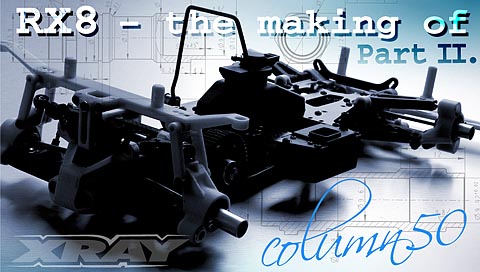
|
|
|
|
Since we established XRAY at the end of 90â™s, my dream always was to get back to my roots and to design and produce a 1/8 on-road car. However, market demand and trends took priority over my dreams and as such all the XRAY model racing cars we have designed, produced and introduced in the last decade were primarily oriented to the most popular categories to expand our product line and cover the market. After we reached the point that XRAY had representation in all popular categories, it was finally time to make my dream come true. Now that this project was on schedule, I was back with my memories and felt like a teenager once again.
Early in 2009 I started with a â�blank sheetâ™ in the computer, but with a very clear idea what I wanted to achieve. First of all I did not want to design anything revolutionary; in high performance model racing car design if you want to have a competitive car there is unfortunately no space for something different or revolutionary. Each racing category has undergone dozens and dozens of years of development where the designs were improved step-by-step by dozens of clever designers and companies around the world. I would not be that selfish to think that I could create something completely different, new and to make it work better than those platforms that have been tweaked for decades. |
|
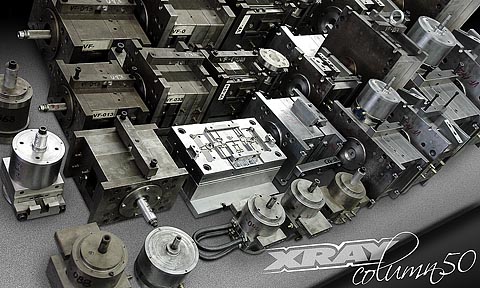
|
|
|
|
I made this mistake already with the 1/12 pan car which we were working on for several years using a completely different design, in which the tests were still negative so there was no other choice than to scrap everything and to start from square one with a proven platform. With RX8 I did not want to make the same mistake and moreover I had already 30 years of experience with 1/8 on-road cars platform and clearly knew what we could not do and what we needed to do.
The first step with any project was to determine the main outline which was pretty clear at the moment:
⢠Proven 1/8 on-road platform, no revolutionary designs which would not work
⢠Design the product for normal drivers like myself who will like the car, who will love to work on and with the car
⢠Keep it simple, use only necessary parts, simplify everything and keep the design simple but smooth, every detail refined and in place
⢠All parts must fit perfectly and create an overall smooth design which is thoroughly dynamic and aggressive |
|
|
⢠Highest performance and best handling are key on-track desires, but at the same time the car must be easy to control and be âśforgivingâť
⢠Create the worldâ™s lightest platform with all parts placed as low as possible
⢠Incorporate all possible set-up adjustments so the car works at all tracks and conditions around the world
⢠Remember that flex is key and flex adjustments is a âśmust haveâť
⢠Remember that the car, out-of-the-box, must be able to win any race including a World Championship
⢠Design composite parts based on the proper material needed for that part, not based on the amount of moulds
⢠Use design ideas from the NT1 and other XRAY cars which drivers love: fixed engine mounting, XRAY 2-speed system, adjustable servo saver, adjustable fuel tank position, multi flex, independent anti-roll bar adjustment, etc.
⢠Produce all parts in-house using only premium materials: Swiss 7075 T6, HUDY Spring Steel™ for all drivetrain parts, own composite mixtures for all composites
|
|
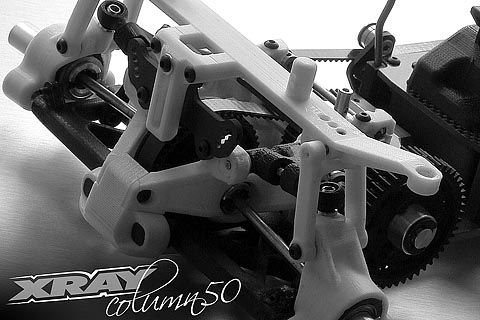
|
|
|
|
With a clear outline, the team of designers started their work early in 2009 in the CAD software. It would take a separate publication to describe the entire process and difficulties that I had to go through in this phase, which is the key phase of the project. If I make a wrong decision with some part at the end it may result in a complete rework which nobody wants to experience. As such the first months I was sitting most of the day in the R&D office following the entire process of designing every part and leaving every evening with dozens of printed drawings which I had to analyze in detail following every small tolerance. So while watching TV at home I did my paperwork homework and returned to office with all comments on the drawings which needed to be immediately incorporated so as not to miss any details.
Previous experience with the NT1 project was a big help with the R&D process on the RX8. We knew precisely â“ for every part â“ which material we would use, what tolerances we could afford to incorporate, and how all the parts would fit together after production. The knowledge has helped us greatly to design parts with appropriate tolerances. This saved a lot of time and energy on reworking the tolerances usually after prototypes are made. |
|
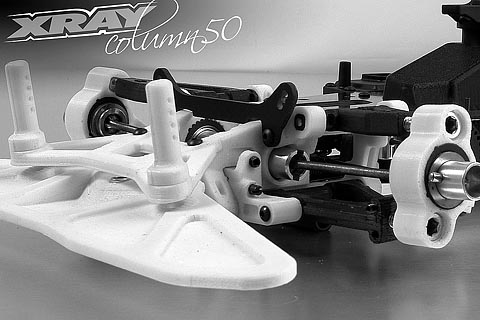
|
|
|
|
With high-competition racing car design, the most difficult area is the composite parts. I do not need to explain that the composite mixture used has influence on the hardness of the part⦠which in turn affects handling, lifespan, toughness, but also how much the part will shrink after moulding. Our knowledge and experience of the composite compounds is nearly alchemy itself, and over the years we have pushed the limits to the maximum. For every part we use a different composite mixture specially mixed for that use and application and it was time to utilize all our knowledge on this very demanding project.
The different composite mixtures for all the different parts also have a negative impact on expenses because we cannot make few large moulds into which we will incorporate all the composite parts, but rather we produce many separate moulds where only a very few or sometimes even only one part is incorporated. It is a common fact that mould production is the most expensive part of any project and as such you can understand how financially extensive such a project has been when we focus primarily on the best specifications of each part and rather produce more moulds to keep the no-compromise approach. On the other hand, this is what differentiates XRAY from the others: when every part fits perfectly, the reliability and lifetime of the parts are considered as some of the best in the industry. And what is most important for the racer â“ the composite mixtures we use are all designed for the highest performance in the different track conditions and for that particular part. |
|
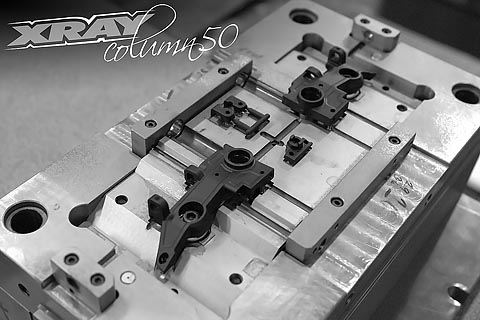
|
|
|
|
With this no-compromise approach we find ourselves at the end with 32 moulds needed for the RX8 project! This is a crazy amount of moulds, believe me! For every single composite part I want always to achieve perfection which meant finding the appropriate hardness, toughness against breaking, flexibility due the suspension characteristics, wear resistance, dynamic crash resistance, weight, shrinkage of the part depending on the tolerances we want to achieve, and so on. To find the perfect mix of all these specifications is a real challenge and for the RX8 it was a real nightmare.
Many times I get asked why we donâ™t replace some of the composite parts with aluminum parts like other manufacturers do. At first I answered that usually the reason why other manufacturers change to aluminum is that for the given quantity the RC market is able to use it is cheaper to produce aluminum parts than to invest heavily into moulds. Moulds still require ongoing updates when the design changes over the years so in many cases it is cheaper to produce the parts in aluminum than in composite. And secondly â“ in the end the composite parts are (in some applications) much better performing which is the reason we went for composite parts even if it is a bit more expensive. |
|
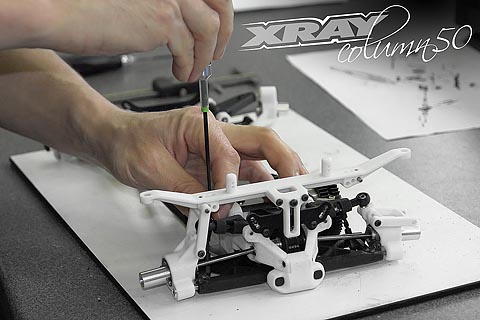
|
|
|
|
A typical example would be aluminum bulkheads. It may look fashionable that nitro on-road cars recently use mostly aluminum bulkheads, but in my own opinion it is primarly the cost reason. I have used aluminum bulkheads at my 1/8 on-road cars 27 (!) years ago and have the knowledge and experience to compare it. Back in the years I used aluminum bulkheads when I first started to use fully-independent suspension. Because the alu bulkheads were mounted to the aluminum chassis the vibrations were rippling through the entire car; screws without threadlock fall out and vibrations also had negative influences on the engine. At those times I made a quick fix using composite inserts between chassis and alu bulkheads to stop the vibrations. And ball-bearings were simply not working properly if they are inserted in the aluminum directly.
For this reason, all my old designs as well as with all XRAY cars where we use ball-bearings in aluminum (alu steering blocks or uprights) I have always used composite bushings to ensure that the ball-bearing is gripped in a composite hub so that the bearing works properly instead of the entire thing trying to turn within an aluminum bulkhead! Because of all these experiences I simply knew on Day 1 of RX8 design that we will have to design and produce composite bulkheads. And at the end the racing results of the NT1 â“ where we also use composite bulkheads â“ we have proved my theory that the composite bulkheads are simply the proper solution for nitro on-road cars.
|
|
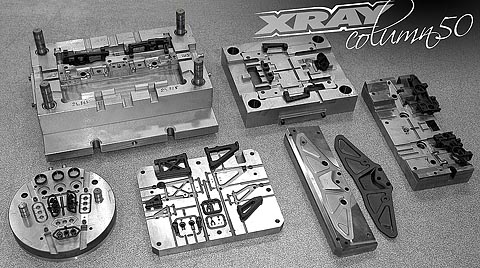
|
|
|
|
Letâ™s get back to the design process. After several months spent behind the computer and after I was convinced that we had fixed all the basic details, it was time for the first prototypes. To make prototypes today is completely different compared to the old days. Now all composite parts are âśprintedâť using a special sand printer technology which creates the sample in few hours from a file we send via e-mail. These are fairly fragile but give an excellent idea how the composite part will look like. All the aluminum, steel and graphite prototypes are very easy to produce as well, thanks to the in-house production technologies linked to the network. |
|
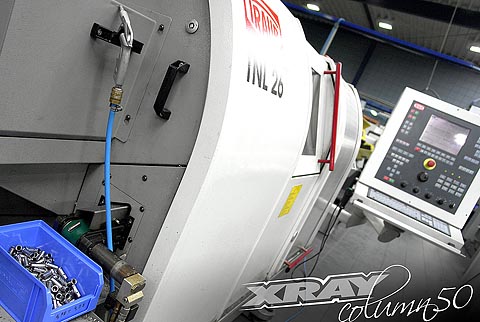
|
|
|
|
Within a second or so we can upload the files to machines and a few minutes later we have prototypes ready at my desk. I cannot even remember how we could design something in the days when all composite parts had to be manually milled from solid nylon, all the steel and aluminum parts machined using manual technologies. It is just crazy when I imagine how we did development in the past in such âśprimitiveâť conditions but still being able to push the limit all the time and go so fast.
The prototype phase is my favorite. I can finally see and most importantly touch the parts, experience reality every single small detail, every edge, every radius. When I get prototypes from production it is always a small Xmas for myself and I feel like a small child. When there are some parts I can mount then all the work I have gets put on hold temporarily, and I enjoy building or mounting the parts. Of course the first prototypes are never perfect and usually when I see the part in reality the first time I immediately get plenty of ideas of what needs to be changed. So usually I end up blaming myself why I did not consider this or that already before. After that my designers received the list of my desired RX8 changes and the process of prototyping went around again.
Sometimes we fixed all details in the second round but many times there were parts which need a few reworkings⦠sometimes 5 and in some special cases even more! Many times my designers get frustrated because of all the small things I want to change here and there, but at the end those small things make vast improvement and make the XRAY what an XRAY is. |
|
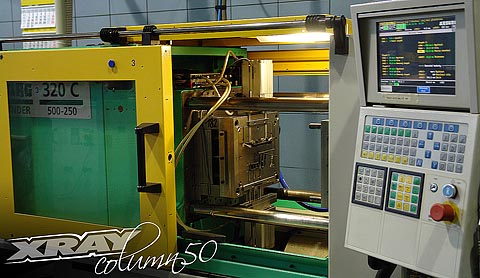
|
|
|
|
After the first RX8 prototype was built it was time for real-world analysis: if all parts fit together, what is the balance of the car, how is the weight distribution, checking for space between different areas to have exact figures where and how much we can still reposition the parts. Of course we need to verify that there is no interference between parts in all the different set-ups including the settings with extreme outer or inner positions which maybe in reality will not even be used. All these small details and all the data collected were transferred back to the CAD files where we tweak all the final details. This may take from few days or even a few months, depending on how many changes I make. Usually once I see the real product I have plenty of changes in mind immediately.
Once I was satisfied with all the first RX8 parts prototypes, it was the time to produce the real prototypes which would be tested under real track conditions. Of course we can do all the virtual tests but nothing compares to the real on-track experience under different conditions. Years ago we did a lot of virtual tests of different parts but once we built and moved to the XRAY Millennium Factory with our own indoor and outdoor tracks we skipped almost all virtual tests and do everything old-school on the tracks with real stuff. |
|
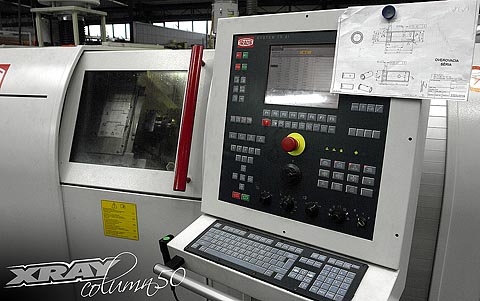
|
|
|
|
To produce final aluminum, steel or graphite parts is nowadays very easy and without any real problem or challenge. But to be able to test the car you need to get all the composite parts which are the key to the handling and performance of the car. So after I have confirmed all the designs of the composite parts there was not much work for me to do on the project until the moulds were ready. Those in-between times are usually time for me to switch to other running or new projects. Since the first day it was more than 1 year until we got to the point that all moulds were produced and I could have parts from all the 32 moulds ready to build the pre-production cars and do the final tests.
The tracks and conditions all around the world are all different and of course we canâ™t do all the testing everywhere and this is where the XRAY Factory Team steps in. A dozen pre production cars were built and sent to the team for extensive testing. Again, the trickiest parts were the composite parts. Weather and track temperatures have a significant influence on the parts, so the out-of-the-box handling and performance are most important and the car needs to be competitive at all the different racing conditions. Therefore the tests have been going on mainly North in Europe in cold conditions, in Australia in hot conditions, in Asia with hot conditions and very high humidity, and in the USA both cold and hot conditions.
All the collected feedback is extremely important and useful as it will determine if the project will require any minor (or even major) changes⦠or if the car is ready for mass production. The key points I wanted to ensure that the team focused on while testing the RX8 was of course the performance and handling but particularly the stiffness and flex of the chassis with radioplate, the weight balance which influences the dynamic of the car, hardness of the suspensions and of course the reliability in standard racing conditions as well in crashes.
It is January 2011 and it has now been two years since we started on the RX8 project. During these two years we have made a huge progress from a blank sheet to a complete final car in the most complex and challenging model car category. The RX8 is now in the final testing phase and soon will enter into its first real races which will prove the reliability but especially the performance. In just a few weeks we will introduce my latest baby and my true love to the public at the Nurnberg Hobby Show and I will be personally at the show to proudly showcase our product and I will be happy to meet everyone to personally explain and show off the RX8 in detail. So if you have the chance, come to Nurnberg and visit the XRAY booth to see me. I will be glad to meet you all. |
|

|
See you around the tracks. Enjoy the ride and â�til next time.
Dipl. Eng. Juraj Hudy
XRAY Chief Designer |
|
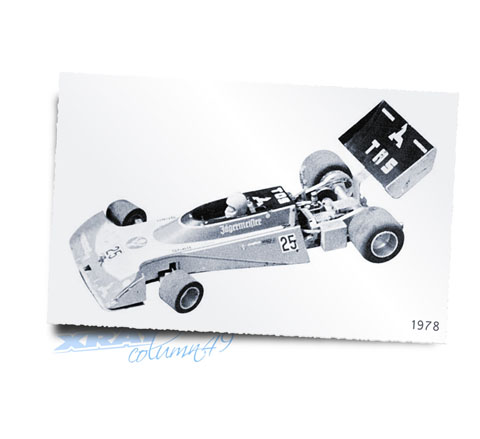
(click to enlarge) |
|
|
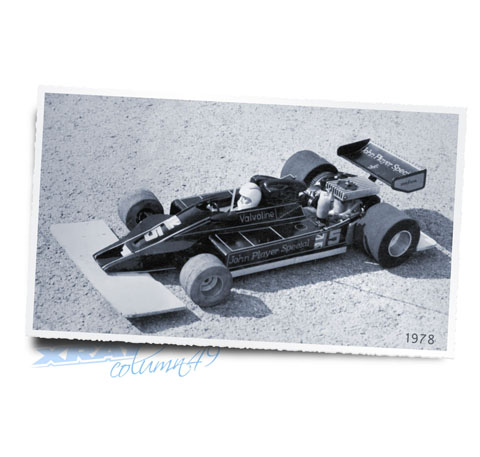
(click to enlarge) |
|
|
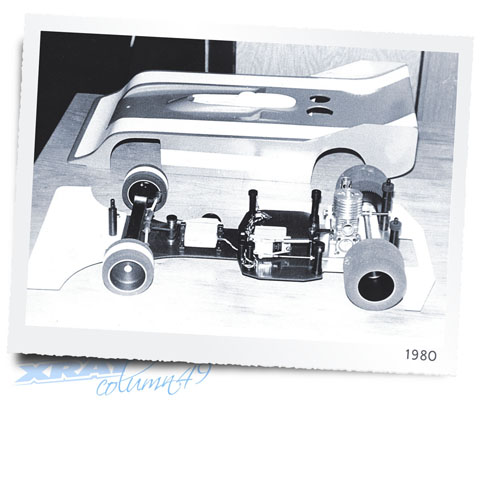
(click to enlarge) |
|
|
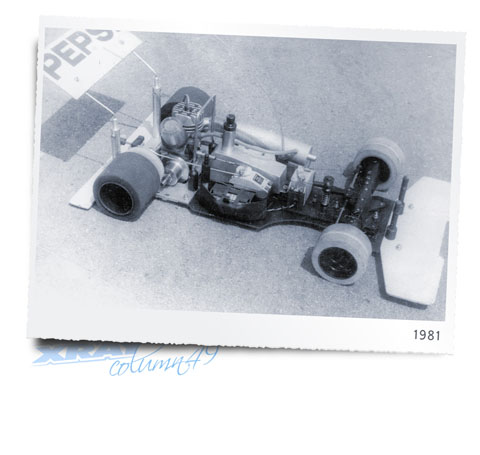
(click to enlarge) |
|
|
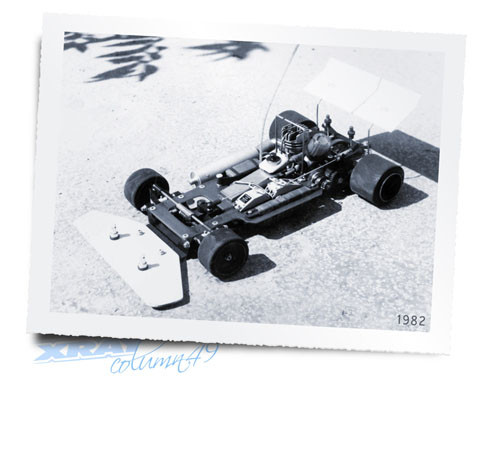
(click to enlarge) |
|
|
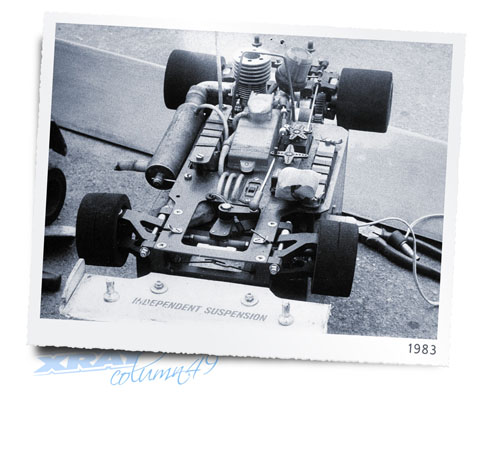
(click to enlarge) |
|
| Archive: |
|
Column #1 - Behind the Scene Stories
Column #2 - Worlds Flashback
Column #3 - T2\'007 Debut
Column #4 - Designing the T2\'007
Column #5 - Worldcup Review and NT1 Testing
Column #6 - Developing and Designing the NT1
Column #7 - Developing and Designing the NT1 - Part 2
Column #8 - Back to the Races
Column #9 - XT8 Truggy Development
Column #10 - Touring Car Development
Column #11 - Bling-bling Mentality
Column #12 - Hot Summer Washout
Column #13 - New Electric Touring Car
Column #14 - Off-road Development
Column #15 - My micro love
Column #16 - Back in the Dirt
Column #17 - Worlds Preparations
Column #18 - 808 Tests & Stress
Column #19 - Excited for the Worlds?
Column #20 - Statistics, Expenses Sheets, Production Analysis, Calculationsâ¦
Column #21 + Column #22 - Euros + Euros + Worlds
Column #23 - The Busiest Season Ever
Column #24 - In Between the Worlds
Column #25 + Column #26 - Well Developed or Overdeveloped?
Column #27 - Back to The Future
Column #28 - 2009 Kick-off
Column #29 - Crazy what?
Column #30 - Last indoor race of the season
Column #31 - Getting into summer season
Column #32 - Heading for the Euros
Column #33 - Testing - Always last minute, always new ideas
Column #34 - European Champion - title celebration
Column #35 - Time to move on
Column #36 - National Heroes
Column #37 - 2010 ready
Column #38 - Decade of Triumph
Column #39 - 2010 Racing Calendar
Column #40 - DHI, ETS & NĂĽrnberg Show
Column #41 - World Championship Practice
Column #42 - EC indoor, EC 1/12, Silverstate, LRP Masters, Neo
Column #43 - Nationals All Around
Column #44 - Warm Warm-ups, Challenging Challenges
Column #45 - Electric Touring Worlds 2010
Column #46 - Team XRAY - World Champion!!!
Column #47 - Summer Vacation, 30x USA Champion Title
Column #48 - T3 Saga Continues
Column #49 - RX8 â“ What? How? When? |
|























